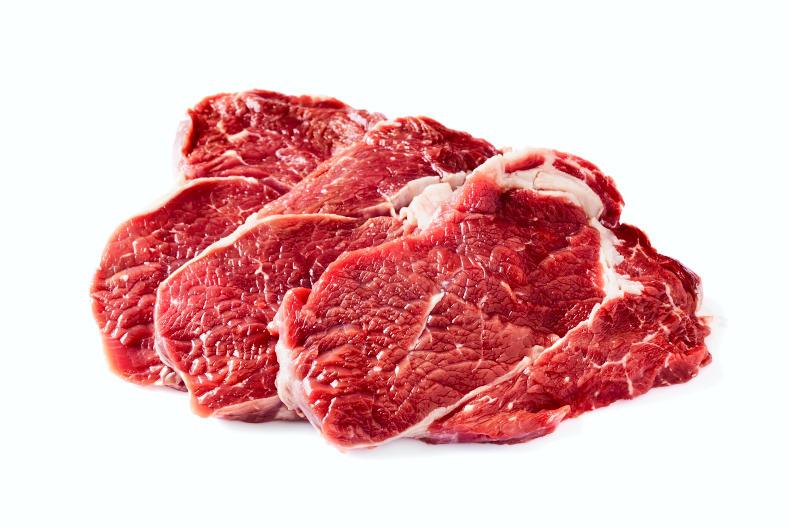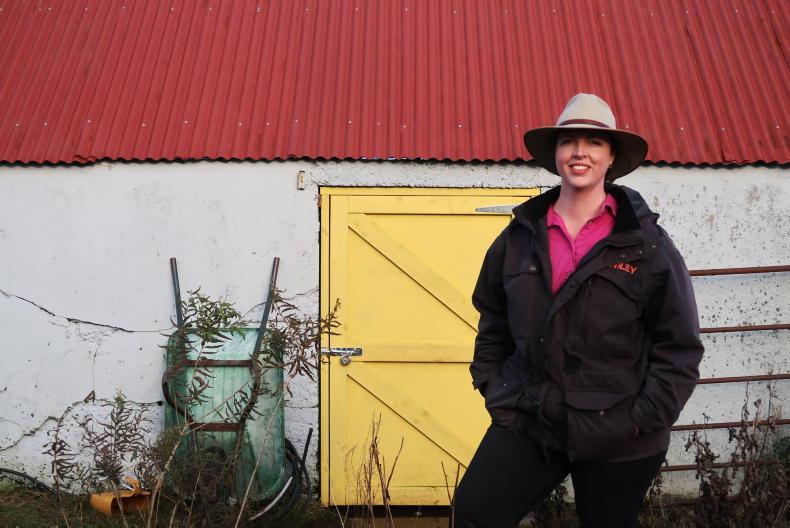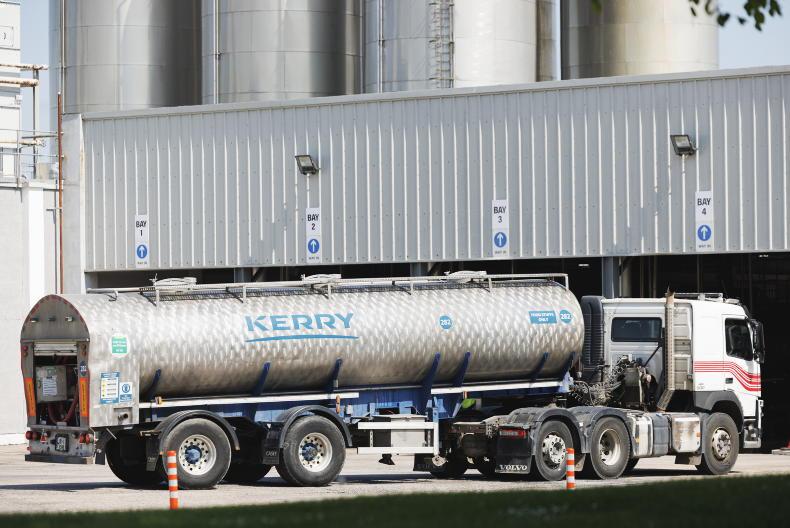Much time and energy is spent debating Irish beef prices, but it is usually on how high or low the top line price is. We never ask the question, are we valuing cattle in the best way that reflects the true value of the carcase.
Factories currently value carcases on the standard EUROP scale for conformation where E grade has the most muscle down to the P grade which has the least muscle. Alongside this, the carcase is similarly graded for fat cover on a scale between one and five, where one is little or no fat cover and five has a heavy level of fat cover. This is a standard EU scale that is operated in each member country so that farmgate prices can be monitored across the EU on a weekly basis.
This system has been in place for decades and was fine when factories bought cattle more or less on a flat-rate basis. However, with the introduction of the QPS-based payment system, which was introduced to reflect the value of cattle coming from a Quality Assurance Scheme, came other specification requirements driven by the growing retail and burger chain market. Each individual conformation and fat grade is subdivided into three categories: minus, equals and plus.
Use of technology
Cattle grading in Ireland was carried out by state employed licensed graders until 2004 when a camera-based machine took over the role and licensed graders were withdrawn. The same type of grading machine is used in every factory in Ireland, though only in the north, since 2011. The system works on the principle of a camera capturing the image of the carcase and applying a computer programme to the image, calculating what grade it merits on the EUROP, one-to-five scale. This system has performed satisfactorily for over a decade in Irish factories.
The current system of grading cattle in Irish factories is based on technology that was in place 20 years ago. Just like the mobile phone, car or tractor from that era, it works perfectly satisfactorily and consistently, doing the job that is was installed to do. However, there have been technological improvements over the past two decades that would mean the existing system could be upgraded. Since the beginning of this century we have moved from analogue images to digital, to high definition and now ultra-high definition. The television picture we receive today is much sharper than what we watched 20 years ago. It follows that the factory camera system could similarly be upgraded.
Are we measuring the right thing to calculate value?
As explained previously, the reason for the present grading system is to enable a standard price comparison be made for cattle across the EU. The introduction of a QPS bonus in Ireland is intended to reflect market value but it could go much further.
With up to 60% of the beef carcase going to mince or grinding beef used in burger manufacture or retail mince sales, the extra value in a carcase is found in the hind quarter cuts, particularly the steak meat. The larger the muscles that provide the steak meat, the greater the value of the carcase. The current EUROP scale broadly reflects this but the technology exists to give a more precise measurement of the muscles. The company E+V, which is German-based and supplies the grading machines currently in use in Irish factories, also has the capability to scientifically measure the:
Yield grade.Total area.Fat/meat rate and absolute areas.Hypodermic fat thickness (PYG).Rib eye area.Rib eye height and width.By going to this level, which is over and above legislative requirements, it would be possible to determine a precise calculation of the amount and types of meat in each carcase presented.
Australian method
Measuring meat yield enables the value of a carcase to be calculated precisely based on the volume of meat it produces for the most valuable parts of the carcase.
However, for consumers of the product, the value of the beef they eat will be based on its quality as opposed to quantity.
This has led to Meat Standards Australia (MSA) developing a system that measures the expected eating quality of a beef carcase, based on the production system and the key eating quality indicators such as marbling for flavour, tenderness and juiciness. Eating standards were established originally by 94,000 consumers assessing 660,000 samples of beef, and the characteristics given an eating quality score.
Each animal is assessed by an inspector at the point of slaughter where the production system and percentage of marbling in the carcase is assessed. From this assessment, a score is given that will determine its eating quality.
Does it work?
Critics of the Australian system for assessing eating quality in addition to carcase meat yield, as a means of valuing the carcase, would say that the eating quality test is too vague and subjective. MSA, on the other hand, would point out that there is now 20 years of work in this project and it continues to show year-on-year growth.
In its report on 2017, MSA had 48,000 farmers in the scheme producing 2.7m cattle which was 40% of the total Australian cattle kill. They have 54 processors in the scheme and 3,668 end users. What is most interesting is that the estimated farmgate value of being part of the MSA production system, farmers have added an extra AUS$130m (€81.25m). On individual cuts of beef, MSA reported that striploins were worth AUS$1.19/kg (€0.74/kg) more, cube roll AUS$2.85/kg (€1.78/kg) more and fillet AUS$ 2.97/kg (€1.86/kg) more.
Whatever the accuracy of the assessment process, it is clear that there is a value in the marketplace for MSA-graded product. Additionally, the company, E+V which supplies the grading machines currently used in Ireland have been working in Australia on an automated system for conducting the MSA measurements. MSA beef is already a successful brand of beef in Australia.
If the assessment process can be automated and deliver a consistent eating quality experience, then the scoring of eating quality will be as important as amount of beef yielded from the carcase.
Much time and energy is spent debating Irish beef prices, but it is usually on how high or low the top line price is. We never ask the question, are we valuing cattle in the best way that reflects the true value of the carcase.
Factories currently value carcases on the standard EUROP scale for conformation where E grade has the most muscle down to the P grade which has the least muscle. Alongside this, the carcase is similarly graded for fat cover on a scale between one and five, where one is little or no fat cover and five has a heavy level of fat cover. This is a standard EU scale that is operated in each member country so that farmgate prices can be monitored across the EU on a weekly basis.
This system has been in place for decades and was fine when factories bought cattle more or less on a flat-rate basis. However, with the introduction of the QPS-based payment system, which was introduced to reflect the value of cattle coming from a Quality Assurance Scheme, came other specification requirements driven by the growing retail and burger chain market. Each individual conformation and fat grade is subdivided into three categories: minus, equals and plus.
Use of technology
Cattle grading in Ireland was carried out by state employed licensed graders until 2004 when a camera-based machine took over the role and licensed graders were withdrawn. The same type of grading machine is used in every factory in Ireland, though only in the north, since 2011. The system works on the principle of a camera capturing the image of the carcase and applying a computer programme to the image, calculating what grade it merits on the EUROP, one-to-five scale. This system has performed satisfactorily for over a decade in Irish factories.
The current system of grading cattle in Irish factories is based on technology that was in place 20 years ago. Just like the mobile phone, car or tractor from that era, it works perfectly satisfactorily and consistently, doing the job that is was installed to do. However, there have been technological improvements over the past two decades that would mean the existing system could be upgraded. Since the beginning of this century we have moved from analogue images to digital, to high definition and now ultra-high definition. The television picture we receive today is much sharper than what we watched 20 years ago. It follows that the factory camera system could similarly be upgraded.
Are we measuring the right thing to calculate value?
As explained previously, the reason for the present grading system is to enable a standard price comparison be made for cattle across the EU. The introduction of a QPS bonus in Ireland is intended to reflect market value but it could go much further.
With up to 60% of the beef carcase going to mince or grinding beef used in burger manufacture or retail mince sales, the extra value in a carcase is found in the hind quarter cuts, particularly the steak meat. The larger the muscles that provide the steak meat, the greater the value of the carcase. The current EUROP scale broadly reflects this but the technology exists to give a more precise measurement of the muscles. The company E+V, which is German-based and supplies the grading machines currently in use in Irish factories, also has the capability to scientifically measure the:
Yield grade.Total area.Fat/meat rate and absolute areas.Hypodermic fat thickness (PYG).Rib eye area.Rib eye height and width.By going to this level, which is over and above legislative requirements, it would be possible to determine a precise calculation of the amount and types of meat in each carcase presented.
Australian method
Measuring meat yield enables the value of a carcase to be calculated precisely based on the volume of meat it produces for the most valuable parts of the carcase.
However, for consumers of the product, the value of the beef they eat will be based on its quality as opposed to quantity.
This has led to Meat Standards Australia (MSA) developing a system that measures the expected eating quality of a beef carcase, based on the production system and the key eating quality indicators such as marbling for flavour, tenderness and juiciness. Eating standards were established originally by 94,000 consumers assessing 660,000 samples of beef, and the characteristics given an eating quality score.
Each animal is assessed by an inspector at the point of slaughter where the production system and percentage of marbling in the carcase is assessed. From this assessment, a score is given that will determine its eating quality.
Does it work?
Critics of the Australian system for assessing eating quality in addition to carcase meat yield, as a means of valuing the carcase, would say that the eating quality test is too vague and subjective. MSA, on the other hand, would point out that there is now 20 years of work in this project and it continues to show year-on-year growth.
In its report on 2017, MSA had 48,000 farmers in the scheme producing 2.7m cattle which was 40% of the total Australian cattle kill. They have 54 processors in the scheme and 3,668 end users. What is most interesting is that the estimated farmgate value of being part of the MSA production system, farmers have added an extra AUS$130m (€81.25m). On individual cuts of beef, MSA reported that striploins were worth AUS$1.19/kg (€0.74/kg) more, cube roll AUS$2.85/kg (€1.78/kg) more and fillet AUS$ 2.97/kg (€1.86/kg) more.
Whatever the accuracy of the assessment process, it is clear that there is a value in the marketplace for MSA-graded product. Additionally, the company, E+V which supplies the grading machines currently used in Ireland have been working in Australia on an automated system for conducting the MSA measurements. MSA beef is already a successful brand of beef in Australia.
If the assessment process can be automated and deliver a consistent eating quality experience, then the scoring of eating quality will be as important as amount of beef yielded from the carcase.













SHARING OPTIONS